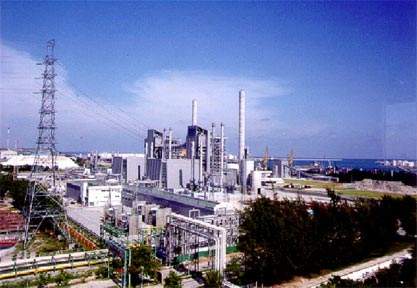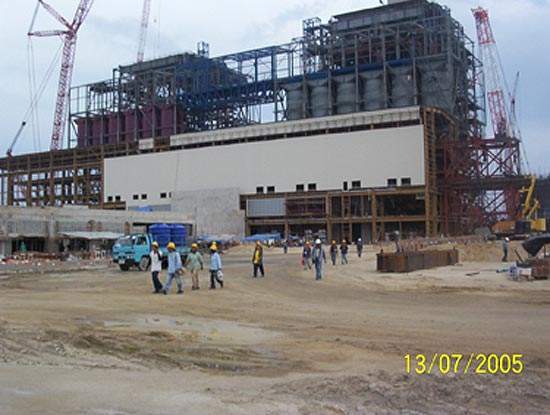Map Ta Phut power station, also known as the BLCP power station, is a 1,434MW coal-fired power plant in operation since December 2007. It represents one of the largest independent power producer (IPP) investments made in south-east Asia.
The project is located on the Map Ta Phut industrial estate in Rayongto, which is also a major power and steam purchaser.
Two 717MW units were delivered to the site by lead equipment supplier Mitsubishi Heavy Industries in October 2006 and February 2007. The site can accommodate three more 700MW units, if required.
Baseload power generated by the plant is sold to state utility Electricity Generating Authority of Thailand (EGAT) under a 25-year power purchase agreement (PPA). The PPA provides EGAT with a secure power supply at a low price of 1.44 baht (5.7 cents) per kWh and provides the sponsors with a secure return on investment with scope for gains from efficient generation.
Map Ta Phut power station financing and project development details
The Map Ta Phut coal-fired power station was built with an estimated investment of $1.3bn.
The IPP consortium operating the Map Ta Phut plant is called BLCP Power, a 50:50 joint venture between the Thai group Banpu (which diversified into power generation in Thailand in the early 1990s) and Electricity Generating Public Company (EGCO).
EGAT selected BLCP Power as one of the winners to build the plant in 1996 and entered a PPA in 1997.
The project development was, however, delayed due to the decrease of Thailand’s power consumption caused by Thailand’s economic crisis in 1998.
The PPA amendment for the plant was signed in December 1999, following which BLCP Power signed a rental contract with the Industrial Estate Authority of Thailand (IEAT) to construct the power plant on reclaimed land at the Map Ta Phut Industrial Estate, in June 2000.
The Office of Environmental Policy and Planning (OEPP), Thailand, approved the construction of the power plant and its coal unloading facilities in January 2002 and February 2002, respectively.
Construction on the project was started in 2003.
Map Ta Phut power station details
Built on a 96ha-site, the Map Ta Phut power station comprises two 717MW coal-based generating units. Each unit consists of a coal-fired boiler and a reheat-type steam turbine supplied by Mitsubishi Hitachi Power Systems (MHPS).
The plant is equipped with a flue gas desulfurisation (FGD) system to reduce emissions.
Other infrastructure facilities at the power station include coal uploading facilities and a water treatment plant.
The power plant uses high-quality bituminous coal imported from Australia and Indonesia.
Environmental concerns over the coal-fired plant
Environmental concerns were raised against the plant and the industrial complex at Map Ta Phut industrial estate in general. Besides greenhouse gas emissions, Greenpeace pointed out that burning bituminous coal releases other atmospheric pollutants with severe health implications for the neighbouring populations.
The Map Ta Phut area has 300,000 inhabitants spread over 25 villages.
Impact of Thailand’s economic conditions on the Map Ta Phut project
The Map Ta Phut power project was originally planned to be completed in 2000, but BLCP could finally began construction in July 2003 due to economic conditions in Thailand. Commissioning of the plant was expected in 2006, but delayed by one year.
The International Monetary Fund (IMF) called for the complete restructuring of Thailand’s electricity industry due to the state of the country’s economy. EGAT had to sell off all its power stations except its hydroelectric plant. It set up a private company, Electricity Generating plc (Egco), to operate two gas-fired power stations totalling 2,100MW in capacity.
EGAT continues to own and operate Thailand’s national power transmission system and buys electricity from privatised and new private producers to supply to distributors and large customers.
In September 1997, the Thai Government requested that the plant sponsors to consider changing the fuel for the plant from coal to natural gas in order to reduce the environmental effects on the area, which already had problems with air pollution from other close-by industries.







